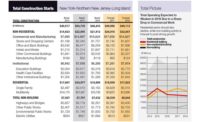When the water is turned off from control valves near Roundout Reservoir, the water will be pumped out, using the already existing Shaft 6 access tunnel.
In June 2013, the DEP replaced the 1940’s era pumps in the Wappinger shaft with nine new pumps capable of removing up to 80 million gallons per day from the aqueduct, more than four times the capacity of the previous pumps. The largest of the new pumps are 23 ft tall and weigh nine tons.
The plan calls for those pumps to begin emptying water from the leaking tunnel and pouring it into the Hudson in October 2022.
As the water is pumped out, the water pressure will fall and water from the Hudson is expected to leak back into the tunnel, so the pumps will have to run constantly to pull the fugitive water from the tunnel.
DEP’s backup plan is to create inundation plugs on either side of the Roseton leak section of the tunnel and seal off the water-filled tunnel.
When the leaking section is emptied or sealed off, the connection tunnels between the bypass tunnel and the existing tunnel can be completed, breaking through to the existing tunnel and completing the bypass.
Meanwhile the dewatered tunnel will allow the DEP to send crews into the leaking Wawarsing section of the aqueduct and grout the leaks in that 500-ft section.
When the bypass and the repairs are completed, the agency will turn on the tap again and let the water flow through the Delaware Aqueduct, expected by March or June of 2023.
If all goes to plan, most New Yorkers will not even know that a major artery carrying their vital drinking water had ever been taken out of service for such a critical operation to extend its life.






Post a comment to this article
Report Abusive Comment